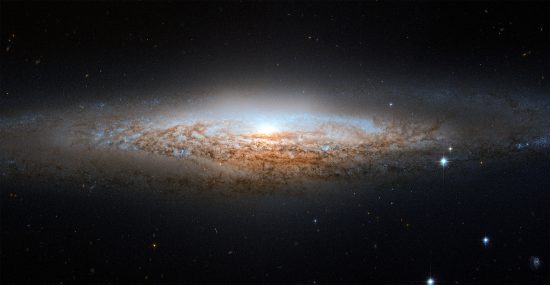
May 3, 2019
The Universe is a bright beacon.
“If the presence of electricity can be made visible in any part of the circuit, I see no reason why intelligence may not be transmitted instantaneously by electricity.”
— Samuel Morse
A previous Picture of the Day discussed the phantom force known as, “dark energy”. It is “dark”, because it cannot be detected with any instrument, only inferred by its putative influence. New data, published in The Astrophysical Journal, is said to confirm the existence of dark energy’s twin, “dark matter”.
Dark matter possesses no electromagnetic identity, so no instruments can see it at any bandwidth. Consensus astrophysicists say that its existence depends on observing its gravitational effects on “ordinary” matter. One of the reasons for dark matter theory, in the first place, is that galaxies are said to require its added gravitational attraction, so that they do not fly apart; or to hold galaxies in clusters: dark matter “haloes” are thought to surround galaxy clusters, confining their stars.
Dark matter theory is problematic, yet astrophysicists continue using it to explain distance, age, and structure in the Universe. Their beliefs about its origin, as well as how it behaves, derive from cosmological theories that depend on gravity-based phenomena, while ignoring plasmas in space and their associated electric fields.
The Electric Universe is primarily concerned with the adaptation of plasma physics and cosmology to a practical world view, one based in natural philosophy. Experimental evidence confirms that electricity is a scalable force that includes micro and macrocosmic phenomena: the electric currents coursing through the human brain are the same, except for scale, as those that power the stars. That electric force is generated through charge separation in space, a condition that has existed since the beginning of time.
Electricity in space can be observed in three main aspects: dark mode, glow mode and arc mode. Glow mode phenomena are probably the most familiar, since they include neon lights. incandescent bulbs, fire, etc. Stars seem to generally possess characteristics similar to arc mode plasma discharges. However, dark mode discharges, as their name implies, are not readily visible, but they are just as capable of electromagnetic interactions. Most nebulae exhibit dark mode discharge behavior.
Electric fields surround galaxies and clusters, not dark matter haloes. Galaxies are bound together by electromagnetism as electric charge flow (electricity) moves out of their polar axes in vast, thousands of light-year-wide funnels, eventually forming umbrella-shapes that flow back through their discs. This means that a circuit exists, receiving its energy from Birkeland currents connecting each galaxy with the rest of the Universe. Presumably, billion-light-year long strands of magnetically confined electric filaments are transmitting power from one end of the cosmos to the other.
In an Electric Universe, dark mode electric current and not dark matter maintains galactic stability. Forces exerted by electrified plasma contained in those twisting filaments circulate in a cosmic circuit with long-range attraction between them. Those filaments, with billions-of-trillion-times more intense fields of influence than gravity, are what hold clusters and their associated galaxies together.
Stephen Smith












